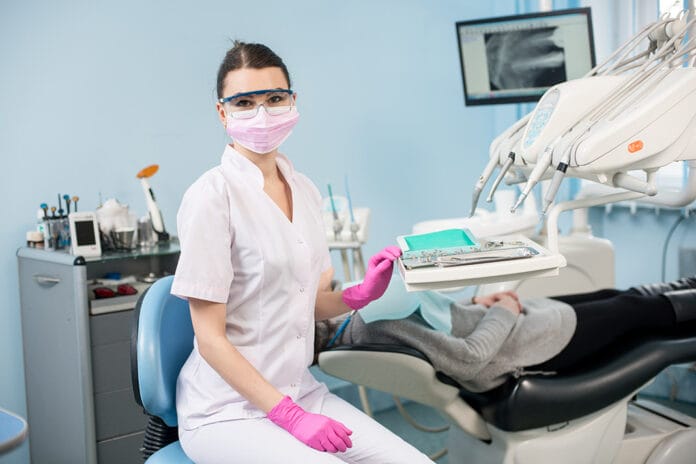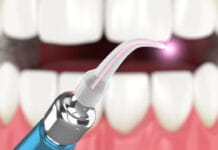During dental hygiene education, students presented with an abundance of information very quickly, including a ton of different models and theories. I still remember my first semester when my professor taught us ADPIED. Do you remember what it stands for? ADPIED is short for assessment, diagnosis, planning, implementation, evaluation, and documentation.
This process breaks down the very important process of care, also known as the standard of care. Each step is an important part of the process of care puzzle, and it is not recommended to jump around. One important tool you will need during ADPIED is your professional decision-making.
Decision-making is a crucial tool in dental hygiene as you are “connecting the dots” of who your patient is ‒ their habits and motivation, the oral condition they present with, and the goals of their future oral condition. In addition, you must formulate a dental hygiene diagnosis, personalized treatment plans, and recommendations based on the collect assessment using your dental hygiene knowledge, past experiences, and analysis.
Assessment
Assessment is the crucial first step to the process of care since dental hygienists are collecting information. By using dental hygiene skills and abilities, you are gathering data that will eventually be needed to create a dental hygiene diagnosis and treatment plan. Examples of assessments are medical histories, dental charting, periodontal charting, extraoral/intraoral cancer screenings, caries risk (CAMBRA), and radiographs.
Assessment is also understanding the patient. What does that mean exactly? When reviewing medical and dental histories, you learn about what medications, allergies, and medical conditions (which can have a direct effect on their oral condition, treatment, and recommendations) they present with. You also better understand their past dental experiences and habits that influence their oral condition.
This segment can be seen as conversational. You are having a conversation with your patient. You are asking questions; they give you answers (and vice versa). They may speak about a bad past dental experience, which has caused them to have dental anxiety. During this phase, you may also learn about your patient’s oral habits, such as smoking, vaping, using smokeless tobacco, or biting nails, to name a few. A patient may express their reason for being in the chair today. What are their concerns? It may be routine dental care, pain, or, of course, interest in cosmetic treatment.
Accuracy is also important because the data you collect will affect the rest of the process. This could mean making sure you are correctly angling your probe during periodontal charting or having the proper position taking radiographs. Failure to do so could result in inaccurate data altering the rest of the treatment.
Diagnosis
Now that you are done with assessment collection, you are able to form a dental hygiene diagnosis. A dental hygiene diagnosis can be summarized in a few statements from all the different assessments you have done. What does the assessment show, and how does that contribute to the patient’s present condition? Why does the patient present with this oral condition? To personalize a patient’s dental hygiene diagnosis, you may consider:
- Periodontal risk – What is their risk for periodontal disease? Why are they at risk (factors)?
- Periodontal classification – Staging and grading
- Biofilm and calculus amount – Light, moderate, heavy. This may include a plaque score
- Gingival bleeding and inflammation
- Caries risk – What are the factors and habits that contribute to their low, moderate, or high risk of caries?
- Describe their oral hygiene –Descriptive terms such as good, fair, poor.
- Determine patients’ needs – What is their home care like? What do they need to change or improve? What is their perception of risk for disease?
- What are the patients’ motivations and attitudes toward their home care/oral condition?
An example can be a patient who presents with “generalized moderate biofilm, light supragingival calculus on the lower anteriors and maxillary molars, fair oral hygiene, slight bone loss visible on the radiographs taken today, generalized light bleeding and inflammation. The patient has a moderate risk for periodontal disease due to family history, lack of interdental cleaning regularly, generalized bleeding on probing, and visible biofilm. The patient also presents with a high risk of caries related to drinking multiple energy drinks throughout the day. She brushes twice a day with a manual toothbrush and uses floss picks twice a week.”
Planning
Creating a treatment plan is the core of the planning stage. You are collaborating with the patient and other providers, such as the dentist. Think about what is the next step in the plan based on your dental hygiene diagnosis? What does the patient need? Does that involve prophylaxis, scaling in the presence of inflammation, periodontal maintenance, or non-surgical periodontal therapy? What strategies will you use? Will you be using hand instruments, ultrasonic instruments, a combination of both? Are local or topic anesthetics needed? Will you provide a fluoride treatment?
Part of a treatment plan is establishing goals. Goals must be measurable, so you are able to eventually evaluate if they were achieved or not. This includes having a time frame on when a goal should be accomplished.
Also, keep in mind goals should be realistic for the patient. This is why it is important to have the patient involved. Treatment planning is an open conversation with the patient. An example could be having a patient clean interdentally three times a week when previously they were not flossing at all.
Implementation
The next step is implementing the actual care and treatment. You are taking action on your plan from the previous step. It is okay if there is a need for adjustments from the initial plan during implementation. If changes need to be made, keeping the patient involved and informed is important. What procedures and services are you providing? Oral hygiene instruction is also a component of implementation.
Evaluation
Evaluation is the step in the ADPIED where you evaluate if your (and the patient’s) goals and treatment plan were achieved. Short- or long-term goals may not be achieved right away. It may take multiple appointments at times.
You may also evaluate the patient’s recall frequency or any additional follow-ups. Were your oral hygiene instruction and recommendation successful? Are there any treatments modifications or adjustments required? In addition, is there a need for a specialty referral such as an oral surgeon or periodontist?
Documentation
When learning about ADPIED, you may come across text that stops at evaluation (i.e., ADPIE). The last letter in ADPIED is for documentation, which is very important in the process of care because it ties or sums everything that was done. To learn more in detail on what can be included in a quality progress note, check out: Documentation 101: How to Write Thorough Dental Hygiene Progress Notes.
Documentation, such as progress notes or patient notes, is considered a legal document (liability). It is patient and office records. This type of document explains what care and procedures were done during a patient’s appointment. It is important to have organized thoughts and layout so anyone, such as another hygienist who sees that patient next visit or even yourself, would understand what was done, recommended, and what the patient’s oral condition looks like.
Dental hygienists treat many patients, which means there are a lot of progress notes to write. At times, we may forget something or run behind, causing a delay in writing our notes. If you think about what ADPIED stands for, it can help remind you of each step you accomplished in the appointment (like a checklist). Writing progress notes in a similar order each time allows you to avoid forgetting a component or important information you do not want to miss. And do not forget to sign it!
ADPIED has always been there for us, from dental hygiene school to where you are in your career now. It is one of the core principles of dental hygiene. Next time you are working with patients or even with your students, do not forget ADPIED!
Need CE? Check Out the Self-Study CE Courses from Today’s RDH!
Listen to the Today’s RDH Dental Hygiene Podcast Below:
Reference
Darby, M.L., Walsh, M.M., Bowen, D.M., Pieren, J.A. (2020). Retrieved from Dental hygiene: Theory and Practice (5th ed., pp. 2–3). essay, Elsevier/Saunders.












